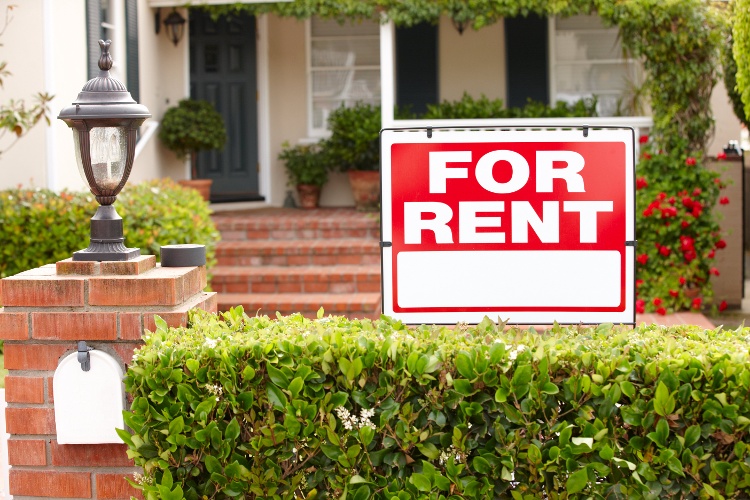If you’re like most real estate investors, you probably plan on owning more than one rental property. It’s important to think about what type of portfolio you want to put your properties into.
That’s because having a property portfolio has a direct impact on your long-term wealth and the amount of positive cash flow your rental properties will generate throughout your holding period.
What is a Property Portfolio?
A property portfolio is a collection of real estate assets purchased to achieve a specific financial goal. The structure of an investment property portfolio is different for each investor and varies based on a variety of factors including investment strategy, risk tolerance level, time horizon, and property type.
How to Start Building a Property Portfolio
There are four key factors to consider when you begin building a rental property portfolio:
1. Objective
Asset types, real estate markets, and investment strategies all perform differently. Understanding how each of these moving pieces work together and contribute to the big picture will help you achieve the end goal of your portfolio while balancing potential risk and reward.
2. Allocation
Develop an allocation model describing how each property you invest in helps to achieve the objective of your portfolio.
Individual properties generate different types of returns over different periods of time, each with varying likelihoods of success. Some investors only look for relatively safe returns, while others aim for bigger potential gains even though the risk is greater.
3. Financials
Real estate is a numbers game, and the more property you add to your portfolio, the more items you’ll need to keep track of.
There are three main categories you’ll want to use to track the financial performance of each property investment:
- Property: Purchase price, repairs and improvements, income and expenses, profit from sale
- Leverage: Method of financing, LTV, rate and terms, lender type
- Expenses: Capital repairs, operating expenses, value adds, after repair value
4. Management
Creating a real estate team and having an experienced property manager for each market you’re investing is a key part of building a property portfolio.
Lenders will want to know how you manage your investments from coast to coast. Building teams also increases your flow of potential deals, so that you’re not depending on any single source to find additional property to keep increasing your portfolio holdings.

Benefits of Having a Rental Property Portfolio
Your level of control over your financial destiny increases each time you add a property to your portfolio. Year after year, cash flow becomes strong and appreciation slowly but surely grows.
More money gives you more choices. Having multiple options is a good thing, especially when it comes to investing in real estate.
Let’s look at some of the biggest benefits of having a rental property portfolio today that can help get you where you want to be tomorrow:
1. More diversification creates lower risk
There are over 19,000 cities and towns in the U.S., each with its own real estate market and a unique set of rewards and risks. With that many locations to choose from, it makes good business sense to diversify geographically by investing in more than one place.
With enough research and due diligence, you can make an educated guess at what places are becoming hot and which ones are not. Even though real estate moves in cycles, all markets react a little bit differently.
Owning rental property in more than one location helps to even out and reduce investment risk while increasing the odds for a bigger reward. In addition to geographic diversification, other ways to diversify your property portfolio are:
- Asset class: Single-family houses and small multifamily property like a duplex
- Tenant type: Families or singles, workforce housing, students in university towns, or Section 8
- Investment strategy: Cash flow, higher yield, or high appreciation
- Ownership strategy: Direct, portfolio purchase, or property shares
These are some of the most common tax benefits you receive by investing in just one rental property:
- Title and escrow fees
- Mortgage interest
- Property taxes
- Insurance premiums
- Leasing commissions
- Property management fees
- Routine repairs and maintenance
- Utilities
- Legal and accounting fees
- Office and travel expense
- Depreciation
Now, imagine multiplying those tax benefits by five times, ten times, or even more.
The more opportunities you have to increase your tax deductions, the less taxable net rental income you’ll have. It’s easy to understand why the wealthiest real estate investors own multiple properties with plenty of cash flow, while paying very little in taxes.
3. Opportunities for funding increase
As the value of the assets in your property portfolio grows, your options for funding and leverage increase as well.
For example, you can do a cash-out refinance of a property in a market with appreciation is high, then use the equity you turned into cash to pay down an existing mortgage or buy a cash cow rental in a different part of the country.
In fact, after a while, many investors find their property portfolio is generating enough free cash flow to fund future deals without having to depend on getting a mortgage.
4. Multiple exit strategies
When you have only one property, your exit strategies are limited. You can sell the property to another investor, to an owner-occupant, or – if you own the property free and clear – structure a rent-to-own option with the current tenant.
However, having several rental properties in your portfolio increasing the options you have for selling when the time is right:
- Sell individual properties one at a time
- Structure rent-to-owns with some properties while selling the rest
- Create smaller portfolios with several properties and re-sell to another investor
- Sell shares of the LLC that holds your portfolio to other investors while maintaining control of the rest of the company

Potential Drawbacks to a Property Portfolio
Becoming complacent is the biggest risk to watch out for. As your investment portfolio grows and cash flows, it’s easy to take success for granted and forget about the little things that got you to where you are today.
Some of the potential drawbacks to a property portfolio – if you don’t keep your eye on the ball – include:
1. Forgetting to diversify
While it’s a good idea to develop a successful system of “lather, rinse, and repeat” it’s important to keep diversification in mind.
Doing the same thing over and over again can unintentionally overweigh your portfolio in one asset class or geographic area. If demand in the market unexpectedly shifts, your entire portfolio could be at risk.
2. Skimping on due diligence
There’s a saying that goes, “Success breeds success.” While there are plenty of successful real estate investors out there who can vouch for how true this is, the fact is that success can also lead to overconfidence.
For example, let's say you’ve purchased six single-family rentals as a long-distance real estate investor. All have been doing exceptionally well for you, with solid cash flow and low tenant turnover. So, it’s logical to think that your next investment will perform equally as well.
Unfortunately, that’s where the mistakes can arise. Instead of skimping on detailed due diligence because they’ve hit six home runs in a row, savvy investors always follow the fundamentals and analyze each market and property as if it were their very first investment.
3. Forgetting to refine your real estate team
As your rental property portfolio grows, at some point you’ll probably need to refine your real estate team.
Maybe your current lender is the perfect source for conventional financing, but doesn’t have access to the alternative loan programs you’ll need to buy more than ten properties. Or, your property manager is an expert at managing your single-family rentals but doesn’t have experience with small multifamily properties like a duplex.
Refining your team doesn’t necessarily mean getting rid of the good people you’ve worked with over the years. But, in the same way that you rebalance your property portfolio from time to time, you’ll need to rearrange your real estate team, too.

Building a Property Portfolio for Cash Flow
Most investors build a property portfolio to generate cash flow. There’s no guarantee that every investment will be profitable. However, there are time-tested ways to increase your odds of success when you focus on cash flow:
Know where to buy
- Location of property must match your target tenant and investment strategy
- Demand for rentals is influenced by factors such as supply and demand, housing affordability index, job and population growth
- Expenses vary from market to market, with some municipalities taking a bigger bite out of potential cash flow than others
- Appreciation is best when slow and steady because markets boasting double-digit gains in market value year over year can quickly begin trending downward
Understand what makes cash flow
- Know the unique opportunities that each market and neighborhood offers
- Value properties by using a competitive market analysis
- Dig deep into what the market rent trends really are and who the competition is
- Create a property proforma with expenses nailed down for each income and expense line item
- Understand what the hot buttons are for each seller you negotiate with, remembering that a seller’s motivation isn’t always about price
Profit is made when the property is purchased
- FSBO sellers who need to sell fast
- Bank REOs, short sales, and pre-foreclosures
- Real estate wholesalers who assign a good deal to you in exchange for a small fee
- Turnkey rental property that cash flows the day you close escrow

How to Build Multiple Property Portfolios
There’s no rule in real estate investing that says you can only have one property portfolio. That’s why many investors today diversify their investments with multiple rental property portfolios.
The most common categories used to build individual real estate portfolios are:
- Location: urban vs. suburban, major vs. secondary markets, neighborhoods with different demographics
- Asset type: Single-family, townhome, condominium or co-op, multifamily, property shares/fractional investing
- Risk level: Balance between relatively risk-free Class A property; Class B that offers a blend of cash flow and appreciation with potential value-added opportunities; and Class C cash cow investments
Buying and Selling Property Portfolios
Rental property portfolios can be bought and sold similar to the way a single property changes hands.
Two resources experienced commercial real estate investors use to find property portfolios for sale are LoopNet and CREXi.com. However, these opportunities may not be the best match for most investors. Sometimes these portfolios contain a large number of non-performing loans or are priced in the tens of millions of dollars, creating a potentially high level of risk.
A great source for the average investor seeking to buy and sell residential property portfolios is Roofstock Portfolios.
Listings are curated, hand-picked and updated weekly. You can view available residential portfolios for sale in all markets or narrow down your search selection by location. Other criteria you can use to fine-tune your search include total portfolio price, gross yield, average property price, and average monthly rent.









